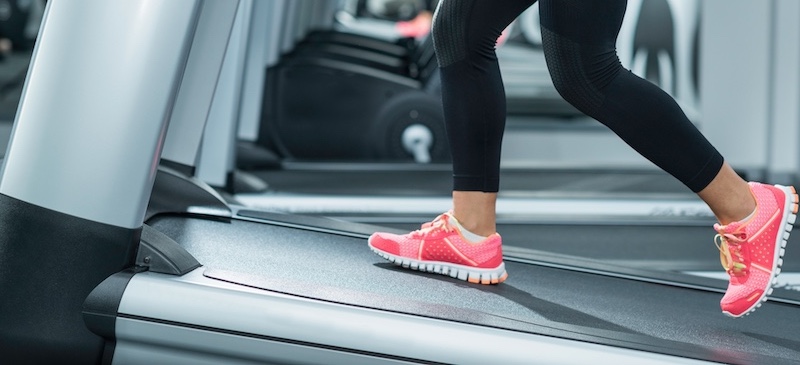This Dr. Axe content is medically reviewed or fact checked to ensure factually accurate information.
With strict editorial sourcing guidelines, we only link to academic research institutions, reputable media sites and, when research is available, medically peer-reviewed studies. Note that the numbers in parentheses (1, 2, etc.) are clickable links to these studies.
The information in our articles is NOT intended to replace a one-on-one relationship with a qualified health care professional and is not intended as medical advice.
This article is based on scientific evidence, written by experts and fact checked by our trained editorial staff. Note that the numbers in parentheses (1, 2, etc.) are clickable links to medically peer-reviewed studies.
Our team includes licensed nutritionists and dietitians, certified health education specialists, as well as certified strength and conditioning specialists, personal trainers and corrective exercise specialists. Our team aims to be not only thorough with its research, but also objective and unbiased.
The information in our articles is NOT intended to replace a one-on-one relationship with a qualified health care professional and is not intended as medical advice.
What Is the 12-3-30 Workout and Is It Safe and Effective?
April 3, 2025

The 12-3-30 workout has taken social media by storm, with fitness enthusiasts praising it as an effective and approachable way to improve cardiovascular health and build endurance. Whether you’re new to exercise or looking for a fresh treadmill routine or new cardio exercises, this simple yet powerful workout might be the perfect fit.
But what exactly is the 12-3-30 workout, and is it right for you? This guide covers everything you need to know about this trending fitness regimen.
What is the 12-3-30 workout?
The 12-3-30 workout is a treadmill-based exercise regimen that has surged in popularity, particularly through social media platforms. Its straightforward structure appeals to a broad audience, from fitness novices to seasoned enthusiasts.
This workout was popularized by social media influencer Lauren Giraldo, who credited it with helping her achieve her fitness goals. Its appeal lies in its simplicity (no running required) while still offering a challenging workout.
The 12-3-30 workout has gained popularity for its simplicity and effectiveness. It is a treadmill-based routine that involves three key elements:
- 12 percent incline. Setting the treadmill to a steep incline to intensify the workout.
- 3 miles per hour speed. Maintaining a moderate walking pace.
- 30 minutes. Completing the routine in half an hour.
Potential benefits
Incorporating the 12-3-30 workout into your fitness routine can offer the same benefits of walking with increased energy expenditure, such as:
1. Boosts cardiovascular health
Walking on an incline elevates the heart rate, providing a cardiovascular workout that can enhance heart health and endurance, and research backs this up.
For example, a study comparing inclined treadmill walking to level walking found that incline walking at a moderate pace offers a substantial cardiovascular stimulus while reducing musculoskeletal injury risk in obese adults.
Another study published in BMC Geriatrics examined the effects of a treadmill exercise program on healthy elderly individuals. Participants who engaged in treadmill walking three times a week for 48 weeks experienced notable improvements in arterial blood oxygenation, maximum oxygen consumption (VO₂ max) and maximum walking distance.
These findings suggest that regular treadmill walking at moderate intensity can effectively boost aerobic capacity and cardiovascular function.
2. May promote weight loss
The increased intensity from the incline can help burn more calories compared to walking on a flat surface, making it an effective workout for weight loss. In fact, research has revealed that incline walking results in a higher percentage of fat utilization, making it effective for weight management.
More specifically, a 2025 exploratory study published in the International Journal of Exercise Science compared the metabolic responses between the 12-3-30 workout and self-paced running on the treadmill. In total 16 participants (nine males, seven females) completed both types of workouts, matching the sessions for total energy expenditure.
What the researchers found was that the 12-3-30 workout took more time due a lower energy expenditure rate, but they noted “it may be more advantageous for individuals aiming to increase fat utilization.”
Another study published in Medicine and Science in Sports and Exercise evaluated the effects of incline treadmill walking on obese adults. The researchers found that walking uphill at a moderate pace provided a substantial cardiovascular stimulus while reducing musculoskeletal injury risk.
This increased energy expenditure can aid in weight management when combined with a balanced diet.
3. Lower impact on joints
Unlike running, this workout minimizes stress on the knees and joints, making it a great alternative for those with joint concerns, since walking is a low-impact activity. This makes the 12-3-30 workout suitable for individuals seeking a challenging yet joint-friendly exercise option, and it helps avoid many common running injuries.
Research published in 2024 looked at the effects of incline walking on knee joint mechanics in healthy adults. The researchers found that walking on an incline significantly decreased the peak internal knee abduction moment compared to level walking.
This reduction in knee abduction moment suggests that incline walking may lower medial knee joint loading, potentially decreasing the risk of knee joint degeneration and associated injuries.
4. Strengthens lower-body muscles
Walking at a steep incline engages the glutes, hamstrings and calves more than walking on a flat surface, contributing to muscle strengthening, toning and endurance.
A study published in the Journal of Biomechanics analyzed the effects of incline walking on muscle activation patterns in healthy adults. The researchers found that walking uphill significantly increased the activation of lower-limb muscles, including the quadriceps and hamstrings, compared to level walking.
This heightened muscle engagement suggests that regular participation in incline walking routines like the 12-3-30 workout can enhance lower-body muscle strength and endurance.
5. Simple and accessible
It requires only a treadmill, making it easy to incorporate into any fitness routine without needing specialized equipment.
6. Increases caloric expenditure
The calories burned during the 12-3-30 workout vary based on individual factors like weight and fitness level. On average, a person weighing around 160 pounds may burn approximately 120 to 220 calories per session.
This expenditure can contribute to weight management when combined with a balanced diet.
7. May improve mental health
Beyond physical advantages, incline walking can positively impact mental well-being. Regular participation may help reduce stress and promote a positive mindset.
Research has shown that regular physical activity, including treadmill walking, has been associated with reductions in anxiety and depression. For instance, a randomized, controlled trial focusing on women with type 2 diabetes found that a treadmill walking program significantly improved anxiety, depression and social well-being.
8. Aids bone health
Weight-bearing exercises like incline walking can positively impact bone mineral density, potentially reducing the risk of osteoporosis. Research has revealed that treadmill walking exercise training is effective in improving bone mineral status and modulating inflammatory cytokines and blood lipid profiles in obese individuals.
In one study published in Neurorehabilitation and Neural Repair, researchers examined the effects of a six-month treadmill exercise program on hip bone mineral density and tibial bone geometry in chronic stroke survivors. The findings suggested that regular treadmill walking can positively influence bone density and structure, indicating potential benefits for bone health.
9. Helps improve balance and stability
The incline and continuous movement require core engagement, which can improve overall balance and stability over time. This can be particularly beneficial for older adults or individuals recovering from injuries.
A 2023 study, for instance, analyzed the effects of self-paced inclined treadmill walking on gait stability and muscle activation in healthy adults. The researchers found that uphill walking significantly influenced gait characteristics, requiring adaptive neuromuscular control strategies to maintain stability.
These findings suggest that regular participation in inclined treadmill walking routines like the 12-3-30 workout can enhance balance and stability by promoting neuromuscular adaptations.
How to do the 12-3-30 workout
To perform the 12-3-30 workout correctly, it just takes a few steps:
- Set the treadmill to a 12 percent incline.
- Adjust the speed to 3 mph (4.8 km/h).
- Walk for 30 minutes at this setting.
- Maintain a steady pace, and use the handrails only if necessary.
- Ensure good posture by keeping your core engaged and shoulders relaxed.
Here’s more detail on the 12-3-30 workout:
- Warm-up: Begin with a five-minute warm-up at a comfortable pace on a flat surface to prepare your muscles and joints.
- Set the treadmill: Adjust the incline to 12 percent, and set the speed to 3 mph.
- Workout duration: Walk for 30 minutes at the set incline and speed.
- Cool down: Conclude with a five-minute cool-down at a slower pace and reduced incline to aid recovery.
Tips for success:
- Posture: Maintain an upright posture with shoulders back and core engaged.
- Handrails: Avoid holding on to the handrails to ensure natural movement and increased calorie expenditure.
- Breathing: Focus on steady and controlled breathing throughout the workout.
Alternative approaches to the 12-3-30 workout
While the standard 12-3-30 workout involves walking at a 12 percent incline and 3 mph for 30 minutes, it’s adaptable:
- Adjusting incline and speed: Beginners might start with a lower incline (e.g., 5 percent to 10 percent) or a slower pace, gradually increasing as endurance builds.
- Incorporating intervals: Alternating between higher and lower intensities, such as brief jogging intervals, can enhance cardiovascular benefits.
Incorporating these variations and understanding the broader benefits can help tailor the 12-3-30 workout to individual needs and goals.
Is it safe?
For most people, the 12-3-30 workout is safe, but it does pose challenges, particularly due to the steep incline. Beginners should start at a lower incline and gradually work up to the full 12 percent to prevent strain.
Some things to consider include:
- Physical condition: Those new to exercise or with pre-existing health conditions should consult a healthcare provider before starting.
- Joint health: While low-impact, the steep incline may still pose challenges for individuals with joint issues.
- Balance and coordination: The incline increases the balance demand. Ensure you are comfortable with this challenge.
Who should try it?
- Individuals looking for a low-impact yet effective workout.
- Those aiming to improve cardiovascular endurance.
- People who prefer walking over running.
It’s also a good workout for people looking to:
- Possibly lose weight
- Tone their bodies by burning more fat
- Increase lower-body strength in the legs and glutes
- Build stamina and endurance
- Boost cardiovascular health
- Improve mental health, such as promoting a positive outlook and mindset
The 12-3-30 workout is suitable for:
- Beginners to fitness enthusiasts: Its scalable nature makes it accessible to various fitness levels.
- Individuals seeking low-impact exercise: Those looking for effective workouts with minimal joint stress.
- Time-conscious individuals: Provides a comprehensive workout in a 30-minute session.
Who should avoid it?
- Individuals with knee, hip or lower back issues.
- Those with balance difficulties.
- Anyone with heart conditions should consult a doctor before attempting this workout.
The 12-3-30 workout should be avoided or modified by:
- Individuals with cardiovascular conditions: Consult a healthcare provider to ensure safety.
- Those with musculoskeletal issues: Knee, hip or back problems may be exacerbated. Seek professional advice.
- Pregnant women: Consult with a healthcare provider before attempting.
Precautions
Walking on a steep incline can pose some minimal risks, but there are precautions you can take to make sure you get the benefits of the 12-3-30 workout without doing harm, such as:
- If new to incline walking, begin with a lower incline and shorter duration, gradually increasing as fitness improves.
- Warm up before starting to prepare your muscles and joints.
- Listen to your body, and stop if you experience discomfort, dizziness, shortness of breath or pain.
- Stay hydrated, and wear proper footwear to prevent strain or injury.
Frequently asked questions
Can you do the 12-3-30 workout outside?
Yes, you can do the 12-3-30 workout outside, but it requires finding a hill with a similar incline (12 percent) and maintaining a 3 mph pace for 30 minutes. Since outdoor terrain varies, using a fitness tracker or GPS app can help monitor your speed and elevation.
However, it’s pretty difficult to do this outside with the same type of consistency, given the required sustained incline and speed. It’s definitely easier to do inside on the treadmill, as it was designed.
Does 12-3-30 actually burn fat?
Yes, the 12-3-30 workout can help burn fat by increasing your heart rate and calorie expenditure. It falls into the moderate-intensity aerobic exercise category, which research has shown is effective for fat loss when combined with a healthy diet.
How many calories do you burn doing 12-3-30?
Caloric burn varies based on weight, fitness level and metabolism. On average, a person weighing around 160 pounds may burn approximately 120 to 220 calories per session, though it can be more or fewer calories depending on the specific person.
How many times a week should you do 12-3-30 on the treadmill?
For general fitness, three to five times per week is ideal. If using it for weight loss, doing it four to six times per week while maintaining a caloric deficit can be effective.
Beginners may want to start with two to three sessions per week.
What is the 12-3-30 workout for beginners?
Beginners can modify the workout by:
- Lowering the incline, starting at, say, 5 percent to 8 percent incline.
- Walking at a slower speed, such as 2.5 mph.
- Reducing the duration, starting with 15-20 minutes.
Gradually increasing incline, speed and duration over time will build endurance.
Can you do the 12-3-30 workout every day?
Yes, but rest and recovery are important. If you’re new to incline walking, doing it daily may lead to muscle fatigue or overuse injuries.
A good approach is to alternate with lower-impact workouts like flat walking, yoga or strength training.
Can you lose weight with the 12-3-30 workout?
Yes, when combined with a healthy diet and a caloric deficit, the 12-3-30 workout can contribute to weight loss by burning calories and improving metabolism.
Is the 12-3-30 workout effective?
Yes, it is effective for improving cardiovascular health, endurance and lower-body strength. While it may not replace strength training or high-intensity workouts, it is a great option for steady-state cardio.
What are effective alternatives to the 12-3-30 workout?
If you want similar benefits but with variety, try:
- Incline walking intervals, alternating between inclines (e.g., 8 percent to 12 percent) and speeds.
- Stair climbing, using a stair machine or real stairs for a similar lower-body burn.
- Hiking and outdoor trails with natural inclines offer similar cardiovascular benefits.
- Elliptical with incline is a lower-impact option that targets similar muscles.
- Rowing or cycling, great for cardio with lower joint impact.
Conclusion
- The 12-3-30 workout is a simple yet effective treadmill routine that offers cardiovascular, weight loss and lower-body-strengthening benefits.
- While it’s generally safe, individuals should approach it with caution, especially if they have pre-existing conditions.
- If you’re looking for an engaging and accessible way to stay fit, the 12-3-30 workout might be the perfect addition to your routine.




